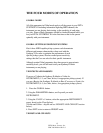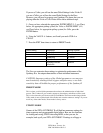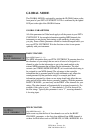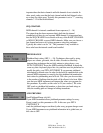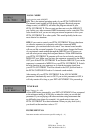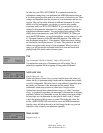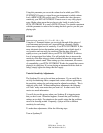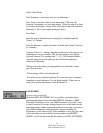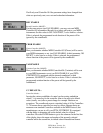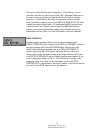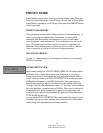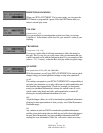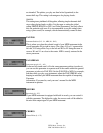
21
ZETA Music Systems, Inc.
ZMC-200 Manual Rev2.0
In order for your ZETA SYNTHONY II to optimally translate the
information coming from your instrument into MIDI information, there are
a few basic parameters that need to be set in terms of sensitivity, etc. These
settings are dependent upon the structure of your instrument, and are very
specific. They can be totally different for different instruments. If, in the
middle of a live performance, you decide you want to play another
instrument with your ZETA SYNTHONY II, you can quickly call up
settings for that particular instrument. It is simply a matter of selecting the
appropriate instrument number. You can program basic settings for five
totally distinct instruments into your ZETA SYNTHONY II. When you
press the ENTER button, you toggle through the various settings. Use the
+/- Parameter buttons to select the individual functions. The values can
then be changed using the +/- Value buttons. Within these basic settings,
the first line in your display shows a VU meter. The position of the small
dashes correspond to the strings of your instrument. When you play a
string, you will see that the associated dash fills in more and more until
playing loudly fills out the entire character space.
TYP
Type of instrument (VIOLIN 4, VIOLIN 5, VIOLA, CELLO, BASS).
You decide here what type of instrument you will be using. This is
particularly important for the assigning of string and hold channels.
NOTE OFF LIM
Note off Limiter (10…30)
Unlike a keyboard, where a key is pressed and the note ends when you
release the key, a instrument string sounds until its vibrations decay totally
or until it is dampened. The decay time is most definitely dependent upon
the quality and structure of the instrument and the strings. Some
instruments sound more percussive; others have a longer sustain.
Synthesizers recreate these characteristics using a so-called ”envelope
curve,” to graphically reproduce an instrument’s characteristic of decaying
amplitude (volume) as it diminishes to zero. By setting a limit point within
the envelope, we can determine at what point in time a note’s ”release”
comes; the point at which it ceases to sound. The higher this value, the
earlier a MIDI NOTE OFF event will be sent to the MIDI instruments.
Smaller values will allow the note to be held longer. In this way you can
adjust this value to match your instrument optimally.
TRIG. LEVEL
Trigger Level (0…9)





